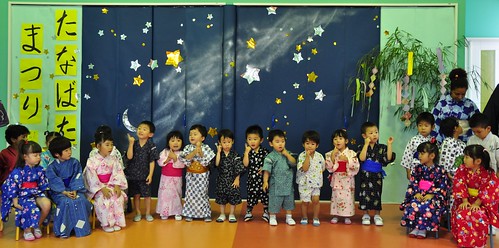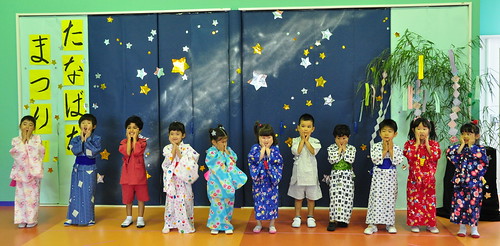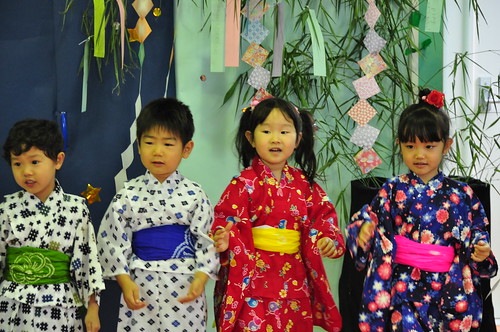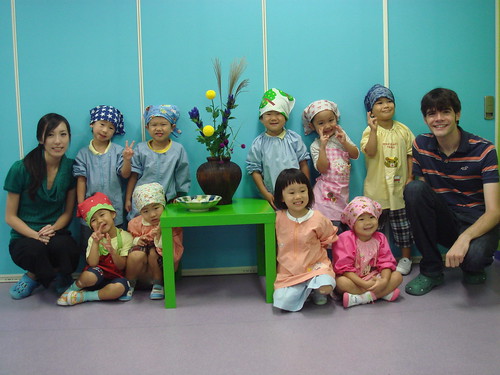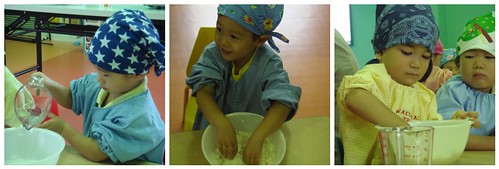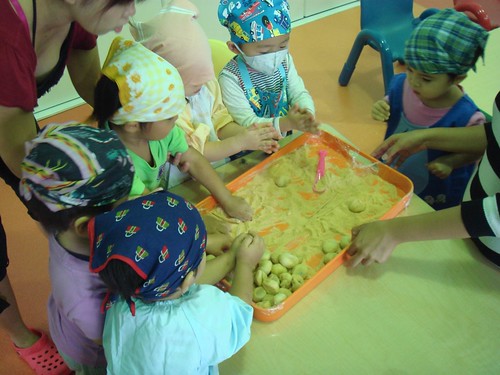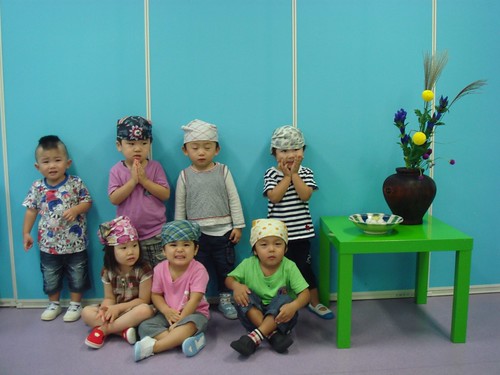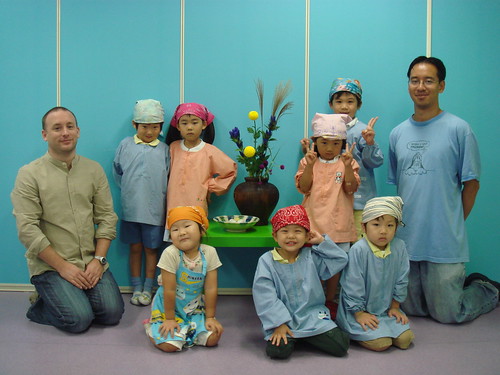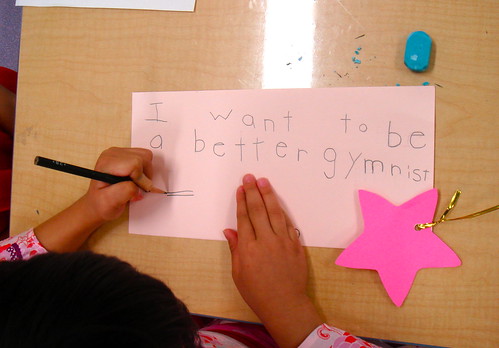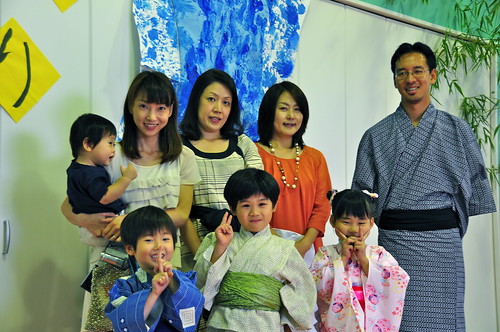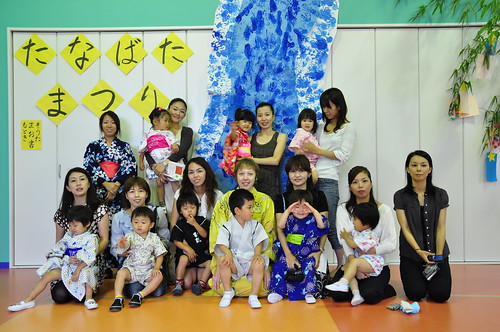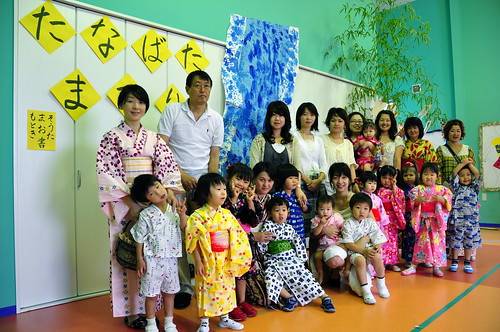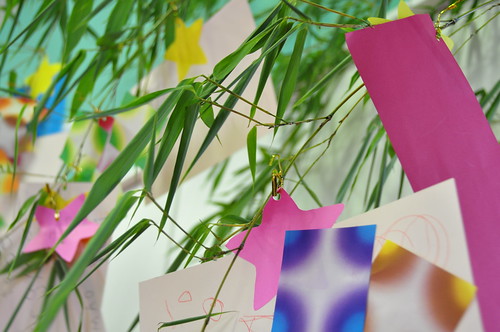Early July is the time of year that we celebrate the Tanabata star festival in Japan, the story of which comes from an old Japanese fairy tale. You can read the story behind tanabata at the bottom of this post.
Apart from writing our wishes on special paper called tanzaku, which we hung on bamboo trees in the hopes that our wishes will come true, we also performed a number of songs for the parents.
The story of Tanabata
Orihime wove clothes for the gods all day everyday on a special machine called a Tanahata. It is believed that the word Tanabata came from the name of this weaving machine.
Tenkou was worried because his daughter did nothing but weave clothes all day every day. He decided that it would be a good idea if he introduced her to a man, and decided on a young man named Hikoboshi. He was a hardworking caretaker of cows who lived on the other side of the Amanogawa river. Amanogawa is “Milky Way” in English.
When Orihime and Hikoboshi met, they fell in love at first sight and spent all of their time together. They spent so much time together in fact, that they totally neglected their respective duties and as a result the cows became sick and the gods’ clothes became old and worn out.
This made everybody including Tenkou, the god of the sky and Orihime’s father quite mad and he forbade them from meeting each other anymore. Tenkou took his daughter back to the other side of the river and put her to work, but the two lovers were so distraught at being forced apart that they could not work at all. They could do little but stare across the Amanogawa river with a deep sense of longing.Seeing his daughter so sad distressed Tenkou so he decided to allow Orihime and Hikoboshi to meet, but only one day a year, on July 7th, and only if they worked hard throughout the year. Knowing this, they worked as hard as before so they could meet on that one day each year.
Traditionally, people would wish for clear skies on on July 7th so that the two could meet over the Milky Way. If it rained on that day, the water level in the river would rise too high and the couple would not be able to meet because they could not cross.
People wished this by writing the wish on a piece of paper called a Tanzaku and hanging it on the branches of a bamboo tree. Nowadays people write their own wishes on the paper.
Everybody looked lovely in their yukatas and jimbeis, and celebrating tanabata this way was an especially enriching experience for our expat families who are in Nagoya and Japan for only a limited time, as it is an experience that they may not have had otherwise.

